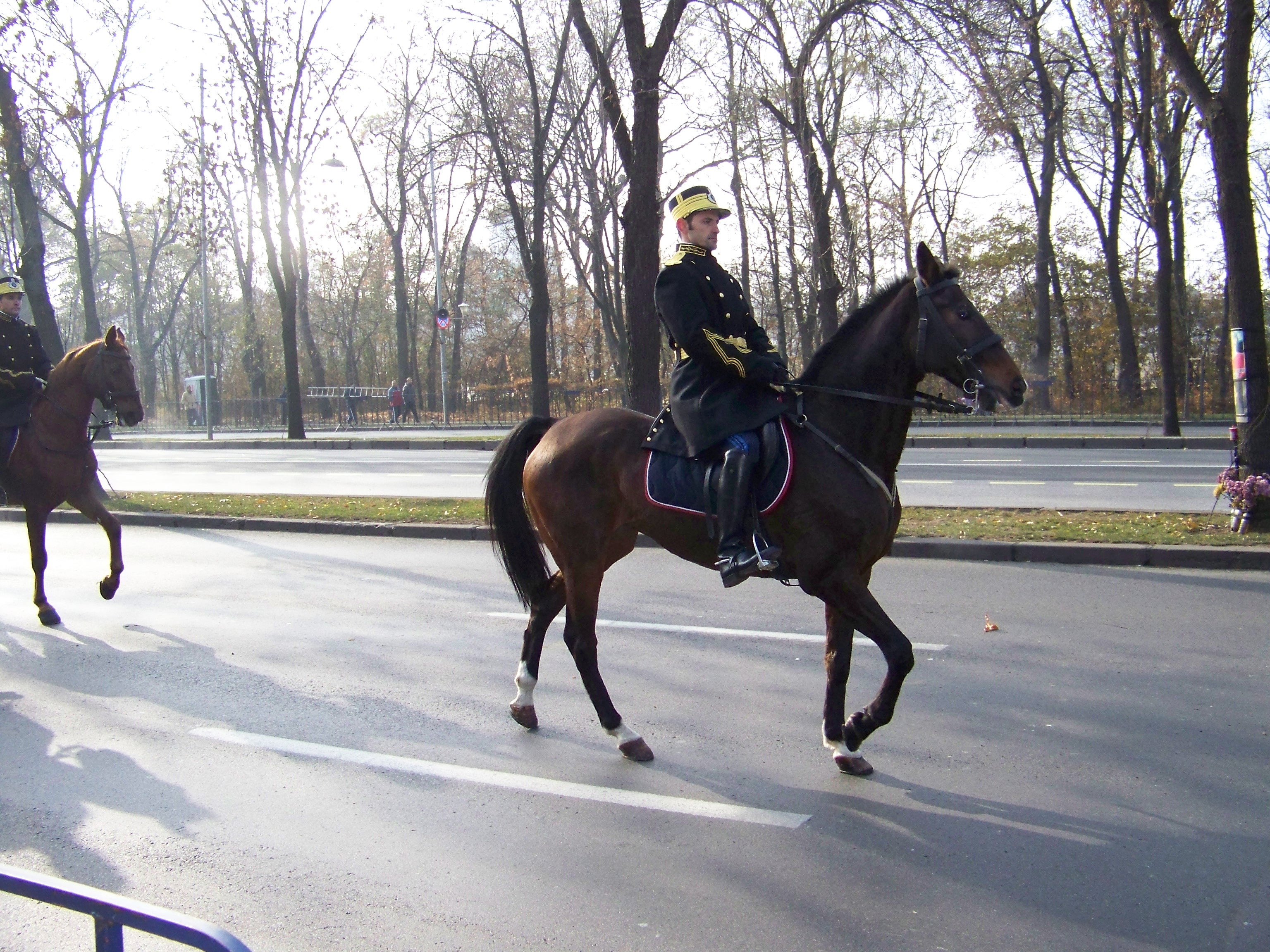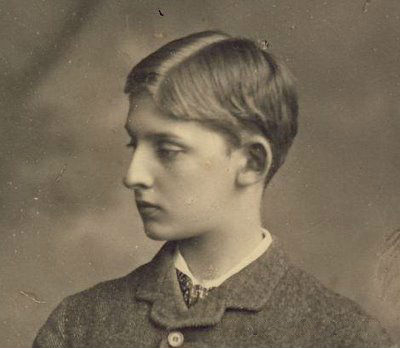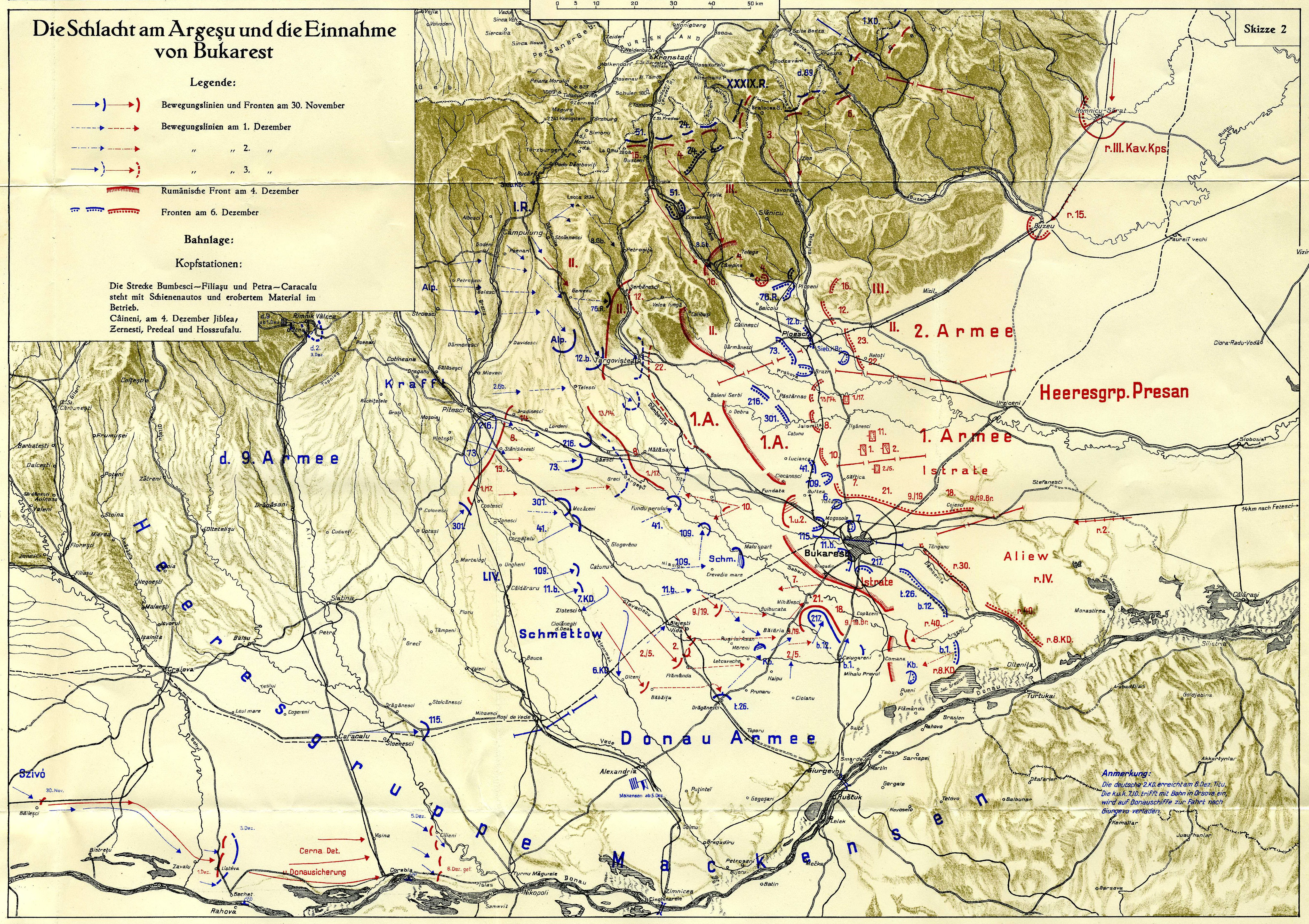|
Alexandru Constantinescu-Porcu
Alexandru C. "Alecu" Constantinescu (4 September 1859 – 18 November 1926) was a Romanian politician. Biography Background and early political activity Born in Bucharest to a family of Wallachian lesser ''boyars'', his father Costache (b. 1811) owned property in Poienarii-Dănești village, Dâmbovița County (now in Giurgiu County). His mother was one Ecaterina, and he had a number of siblings. He began school in his native city before leaving for Paris, where he graduated with a law degree in 1879 and a doctorate in 1881. After returning to Romania, he first worked as a lawyer in private practice before serving as attorney for the state and for an agricultural bank from 1884 to 1889. Joining the National Liberal Party in 1882, he was elected deputy Mayor of Bucharest that year, remaining until 1884. In 1895, he was elected to the Senate for Putna County. He joined the Chamber of Deputies in 1901.Grigore and Şerbu, p.179 He was Agriculture and Domains Minister from Novemb ... [...More Info...] [...Related Items...] OR: [Wikipedia] [Google] [Baidu] |
Alexandru C
Alexandru is the Romanian form of the name Alexander. Common diminutives are Alecu, Alex, and Sandu. Origin Etymologically, the name is derived from the Greek "Αλέξανδρος" (Aléxandros), meaning "defending men" or "protector of men", a compound of the verb "ἀλέξω" (alexō), "to ward off, to avert, to defend" and the noun "ἀνδρός" (andros), genitive of "ἀνήρ" (anēr), "man". It is an example of the widespread motif of Greek (or Indo-European more generally) names expressing "battle-prowess", in this case the ability to withstand or push back an enemy battle line. The earliest attested form of the name is the Mycenaean Greek feminine noun ''a-re-ka-sa-da-ra'', (transliterated as '' Alexandra''), written in Linear B syllabic script. The name was one of the titles ("epithets") given to the Greek goddess Hera and as such is usually taken to mean "one who comes to save warriors". In the Iliad, the character Paris is known also as Alexander. [...More Info...] [...Related Items...] OR: [Wikipedia] [Google] [Baidu] |
World War I
World War I (28 July 1914 11 November 1918), often abbreviated as WWI, was one of the deadliest global conflicts in history. Belligerents included much of Europe, the Russian Empire, the United States, and the Ottoman Empire, with fighting occurring throughout Europe, the Middle East, Africa, the Pacific, and parts of Asia. An estimated 9 million soldiers were killed in combat, plus another 23 million wounded, while 5 million civilians died as a result of military action, hunger, and disease. Millions more died in genocides within the Ottoman Empire and in the 1918 influenza pandemic, which was exacerbated by the movement of combatants during the war. Prior to 1914, the European great powers were divided between the Triple Entente (comprising France, Russia, and Britain) and the Triple Alliance (containing Germany, Austria-Hungary, and Italy). Tensions in the Balkans came to a head on 28 June 1914, following the assassination of Archduke Franz Ferdin ... [...More Info...] [...Related Items...] OR: [Wikipedia] [Google] [Baidu] |
Roman, Romania
Roman () is a city located in the central part of Western Moldavia, a traditional region of Romania. It is located 46 km east of Piatra Neamț, in Neamț County at the confluence of the rivers Siret and Moldova. Its name was taken from Moldavian Voivode Roman I of Moldavia. From here prince Roman realized the centralization of Moldavia, the city of Roman being the capital of the Lower Country of Moldavia ( ro, Țara de Jos). History The earliest mention of the city is in the Novgorod Chronicle (dated between 1387 and 1392). Five years later, the name appeared on a donation deed. The city is mentioned in a Moldavian document, signed by Moldavia's Voivode Roman I, on March 30. The document is one of the first of documents of the then-young state of Moldavia, being the first which holds a fully legible version of the Moldavia seal, bearing the aurochs, the moon, the star, and the flower, still in use on coat of arms of Moldova. Roman became a diocesan see in September 14, 140 ... [...More Info...] [...Related Items...] OR: [Wikipedia] [Google] [Baidu] |
Gendarmerie (Romania)
The ''Jandarmeria Română'' () is the national Gendarmerie force of Romania, tasked with high-risk and specialized law enforcement duties. It is one of the two main police forces in Romania (the other being the Romanian Police - a civilian force), both having jurisdiction over the civilian population. The gendarmerie is subordinated Ministry of Internal Affairs and does not have responsibility for policing the Romanian Armed Forces. This duty lies with the Military Police subordinated to the Romanian Land Forces. History The beginnings The first Gendarmerie corps was created on 3 April 1850 in Moldavia by Prince Grigore Alexandru Ghica. After the Union of Moldavia and Wallachia in 1859 under Prince Alexandru Ioan Cuza, the Gendarmerie was subordinated to the Ministry of War as a separate armed force.''Repere istorice'' , ... [...More Info...] [...Related Items...] OR: [Wikipedia] [Google] [Baidu] |
Romanian Police
The Romanian Police ( ro, Poliția Română, ) is the national police force and main civil law enforcement agency in Romania. It is subordinated to the Ministry of Internal Affairs and it is led by a General Inspector with the rank of Secretary of State. Duties The Romanian Police is responsible for: * policing in Romania * the protection of the fundamental rights and liberties of the citizens and of the private and public property * the prevention and identification of criminal offences and their perpetrators * maintaining the public order and safety Organization General Inspectorate of Romanian Police is the central unit of police in Romania, which manages, guides, supports and controls the activity of the Romanian police units, investigates and analyses very serious crimes related to organized crime, economic, financial or banking criminality, or to other crimes which make the object of the criminal cases investigated by the Prosecutor's Office attached to the High Court of ... [...More Info...] [...Related Items...] OR: [Wikipedia] [Google] [Baidu] |
Moldavia
Moldavia ( ro, Moldova, or , literally "The Country of Moldavia"; in Romanian Cyrillic: or ; chu, Землѧ Молдавскаѧ; el, Ἡγεμονία τῆς Μολδαβίας) is a historical region and former principality in Central and Eastern Europe, corresponding to the territory between the Eastern Carpathians and the Dniester River. An initially independent and later autonomous state, it existed from the 14th century to 1859, when it united with Wallachia () as the basis of the modern Romanian state; at various times, Moldavia included the regions of Bessarabia (with the Budjak), all of Bukovina and Hertsa. The region of Pokuttya was also part of it for a period of time. The western half of Moldavia is now part of Romania, the eastern side belongs to the Republic of Moldova, and the northern and southeastern parts are territories of Ukraine. Name and etymology The original and short-lived reference to the region was ''Bogdania'', after Bogdan I, the fo ... [...More Info...] [...Related Items...] OR: [Wikipedia] [Google] [Baidu] |
Iași
Iași ( , , ; also known by other alternative names), also referred to mostly historically as Jassy ( , ), is the second largest city in Romania and the seat of Iași County. Located in the historical region of Moldavia, it has traditionally been one of the leading centres of Romanian social, cultural, academic and artistic life. The city was the capital of the Principality of Moldavia from 1564 to 1859, then of the United Principalities from 1859 to 1862, and the capital of Romania from 1916 to 1918. Known as the Cultural Capital of Romania, Iași is a symbol of Romanian history. Historian Nicolae Iorga stated that "there should be no Romanian who does not know of it". Still referred to as "The Moldavian Capital", Iași is the main economic and business centre of Romania's Moldavian region. In December 2018, Iași was officially declared the Historical Capital of Romania. At the 2011 census, the city-proper had a population of 290,422 (making it the fourth most populous in ... [...More Info...] [...Related Items...] OR: [Wikipedia] [Google] [Baidu] |
Ferdinand I Of Romania
Ferdinand (Ferdinand Viktor Albert Meinrad; 24 August 1865 – 20 July 1927), nicknamed ''Întregitorul'' ("the Unifier"), was King of Romania from 1914 until his death in 1927. Ferdinand was the second son of Leopold, Prince of Hohenzollern and Infanta Antónia of Portugal, daughter of Ferdinand II of Portugal and Maria II of Portugal. His family was part of the Catholic branch of the Prussian royal family Hohenzollern. In 1889, Ferdinand became Crown Prince of the Kingdom of Romania, following the renunciation of his father (in 1880) and older brother, Wilhelm (in 1886), to the rights of succession to the royal crown of Romania. From the moment he settled in Romania, he continued his military career, gaining a series of honorary commands and being promoted to the rank of corps general. He married in 1893 Princess Maria Alexandra Victoria, later known as Queen Marie of Romania, granddaughter of Queen Victoria and Emperor Alexander II and daughter of Alfred, Duke of Saxe-Coburg ... [...More Info...] [...Related Items...] OR: [Wikipedia] [Google] [Baidu] |
Battle Of Bucharest
The Battle of Bucharest, also known as the '' Argeş–Neajlov Defensive Operation'' in Romania, was the last battle of the Romanian Campaign of 1916 in World War I, in which the Central Powers' combatants, led by General Erich von Falkenhayn, occupied the Romanian capital and forced the Romanian Government, as well as the remnants of the Romanian Army to retreat to Moldavia and re-establish its capital at Iaşi. The battle was of defensive nature, as the Romanian Army was joined by a part of the Imperial Russian army. The Romanian Army, led by General Constantin Prezan, had previously been unable to stop the German counterattack in Muntenia. The armed forces that made up the German counterattack were mostly German, two armed groups attacking concentrically, one from the direction of Oltenia and the other from the south of the Danube. The sheer number of troops involved, as well as the large area of operations, make it one of the most complex battles fought on Romanian soil d ... [...More Info...] [...Related Items...] OR: [Wikipedia] [Google] [Baidu] |
Ministry Of Internal Affairs (Romania)
The Ministry of Internal Affairs of Romania ( ro, Ministerul Afacerilor Interne) is one of the eighteen ministries of the Government of Romania. From 23 August 1944 to 18 March 1975 the ministry held the title of ''Minister of Internal Affairs'', between 2004 and 2007, held the title of ''Minister of Administration and Interior'', and since April 2007, ''Minister of Interior and Administrative Reform''. In December 2008, the Boc government changed the name back to ''Ministry of Administration and Interior''. Until 2006, the ministry was housed near Lipscani in ''Palatul Vama Poştei'', built between 1914 and 1926 according to the architect Statie Ciortan's plans. In 2006 the ministry moved into the former building of the Senate on Revolution Square. Subordinated structures * Romanian Police * Romanian Inspectorate for Emergency Situations * Romanian Border Police * Romanian Gendarmerie * Romanian National Archives * General Directorate for Intelligence and Internal Securit ... [...More Info...] [...Related Items...] OR: [Wikipedia] [Google] [Baidu] |
United Kingdom Of Great Britain And Ireland
The United Kingdom of Great Britain and Ireland was a sovereign state in the British Isles that existed between 1801 and 1922, when it included all of Ireland. It was established by the Acts of Union 1800, which merged the Kingdom of Great Britain and the Kingdom of Ireland into a unified state. The establishment of the Irish Free State in 1922 led to the remainder later being renamed the United Kingdom of Great Britain and Northern Ireland in 1927. The United Kingdom, having financed the European coalition that defeated France during the Napoleonic Wars, developed a large Royal Navy that enabled the British Empire to become the foremost world power for the next century. For nearly a century from the final defeat of Napoleon following the Battle of Waterloo to the outbreak of World War I, Britain was almost continuously at peace with Great Powers. The most notable exception was the Crimean War with the Russian Empire, in which actual hostilities were relatively limited. How ... [...More Info...] [...Related Items...] OR: [Wikipedia] [Google] [Baidu] |
Ion I
An ion () is an atom or molecule with a net electrical charge. The charge of an electron is considered to be negative by convention and this charge is equal and opposite to the charge of a proton, which is considered to be positive by convention. The net charge of an ion is not zero because its total number of electrons is unequal to its total number of protons. A cation is a positively charged ion with fewer electrons than protons while an anion is a negatively charged ion with more electrons than protons. Opposite electric charges are pulled towards one another by electrostatic force, so cations and anions attract each other and readily form ionic compounds. Ions consisting of only a single atom are termed atomic or monatomic ions, while two or more atoms form molecular ions or polyatomic ions. In the case of physical ionization in a fluid (gas or liquid), "ion pairs" are created by spontaneous molecule collisions, where each generated pair consists of a free electron and a ... [...More Info...] [...Related Items...] OR: [Wikipedia] [Google] [Baidu] |
.jpg)




